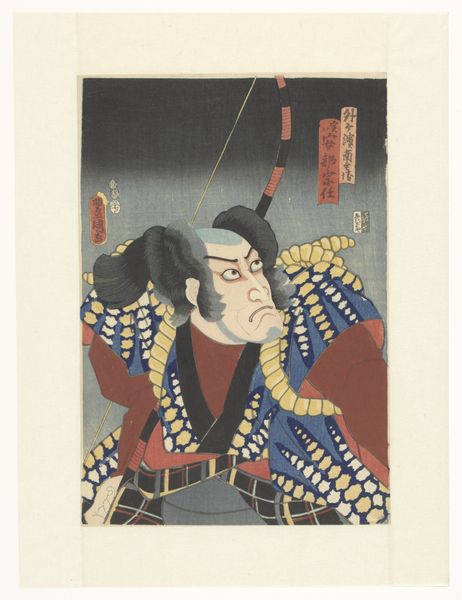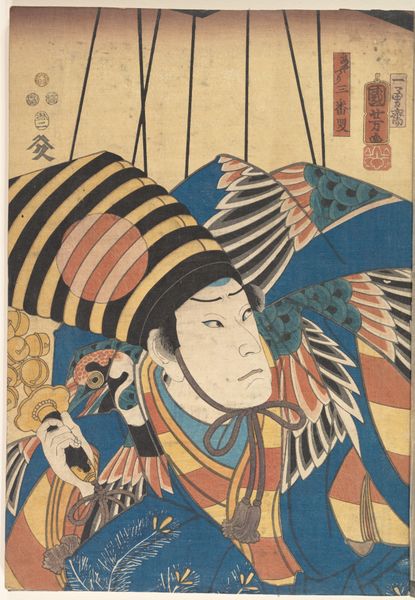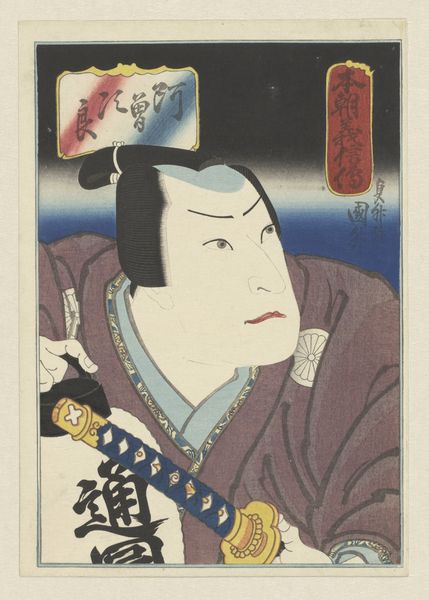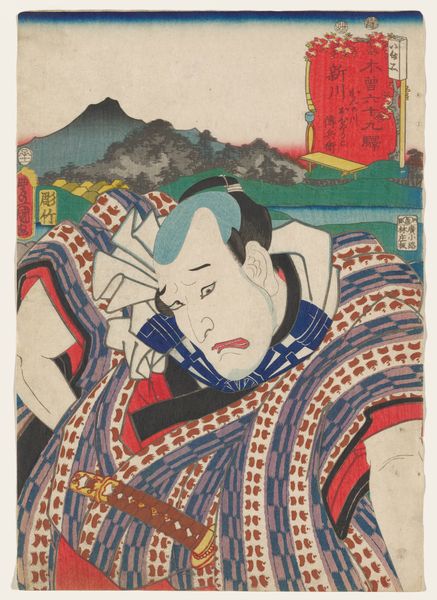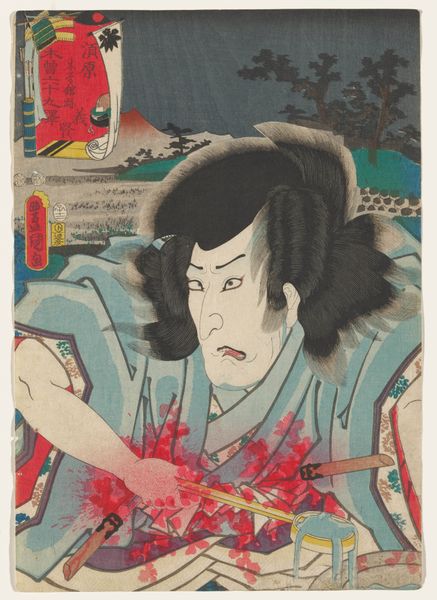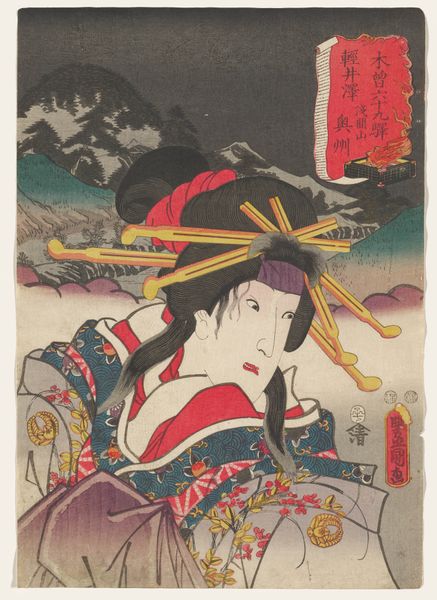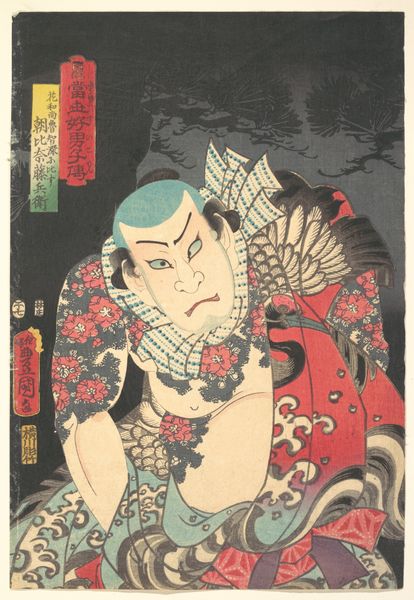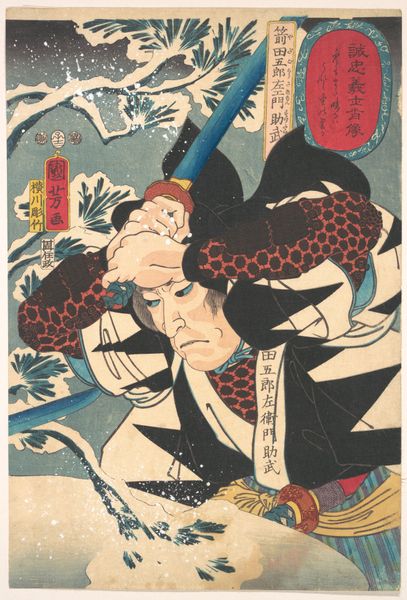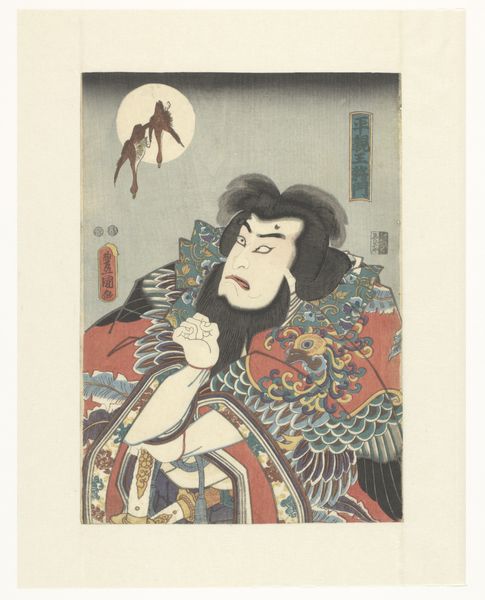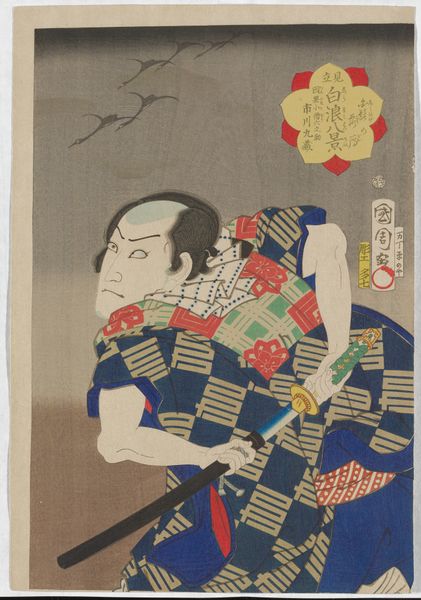![['The wise and clear waters of the Hori river', 'All five elements compared'] by Utagawa Kunisada](/_next/image?url=https%3A%2F%2Fd2w8kbdekdi1gv.cloudfront.net%2FeyJidWNrZXQiOiAiYXJ0ZXJhLWltYWdlcy1idWNrZXQiLCAia2V5IjogImFydHdvcmtzLzMyOWJjNzVmLWJmNzktNDk5OS1iODdkLTBhN2RjYTAzODc0NC8zMjliYzc1Zi1iZjc5LTQ5OTktYjg3ZC0wYTdkY2EwMzg3NDRfZnVsbC5qcGciLCAiZWRpdHMiOiB7InJlc2l6ZSI6IHsid2lkdGgiOiAxOTIwLCAiaGVpZ2h0IjogMTkyMCwgImZpdCI6ICJpbnNpZGUifX19&w=3840&q=75)
['The wise and clear waters of the Hori river', 'All five elements compared'] 1852 - 1858
0:00
0:00
utagawakunisada
Rijksmuseum
#
portrait
# print
#
asian-art
#
ukiyo-e
#
flat colour
#
watercolour illustration
Dimensions: height 355 mm, width 242 mm
Copyright: Rijks Museum: Open Domain
Curator: Editor: Okay, so here we have "The Wise and Clear Waters of the Hori River" and "All Five Elements Compared," a print made between 1852 and 1858 by Utagawa Kunisada. It’s part of the Rijksmuseum collection, and what immediately strikes me is the intricacy of the fabrics depicted – so many patterns, all suggesting immense wealth. What aspects of this work grab your attention? Curator: What I find most compelling is considering this print not just as an aesthetic object, but as a product of specific labor and materials. How were the blocks carved? What kind of paper was used, and who produced it? The details of the garments certainly signify wealth, but let’s also consider the production processes behind that representation. What kind of dyes were utilized? How did these choices influence the piece's accessibility and cost for contemporary audiences? Editor: That's fascinating. I hadn't really considered the materials beyond their visual effect. It seems like this print aimed for mass appeal, being an ukiyo-e piece. How does the artist play with ideas of commerce in addition to artistry? Curator: Precisely. Kunisada's choice to depict popular actors, especially in elaborate costumes, reveals the increasing entanglement of art and consumer culture in Edo-period Japan. Consider the demand this would have created for certain textiles and fashion trends depicted. Each print then isn't just an image, it's also an engine within the material economy. Does considering the print in this way affect your initial impression? Editor: It definitely does! It is not *just* decorative but functions in a complex interplay of production and representation. Seeing art not just as a pretty picture but as a product of social forces, as an influence of the economic and commercial landscape shifts my viewpoint completely! Thank you. Curator: The pleasure is mine. Looking at the material realities often unveils hidden dimensions and deeper insights of any artwork.
Comments
No comments
Be the first to comment and join the conversation on the ultimate creative platform.

